#Japanese Government Railways
Text





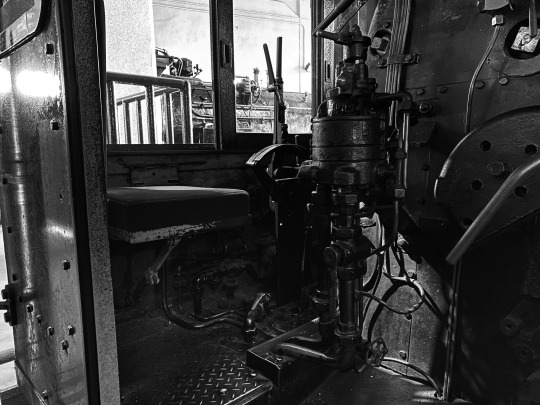



シゴサン "SHIGOSAN"

鉄道省 C53形蒸気機関車 C53 45
The Ministry of Railways / Japanese Government Railways
Steam locomotives Class C53
Road number C53 45
昭和3年 汽車製造株式會社製(大阪) 製造番号1040
Made at Kisha Seizo Co.,Ltd. Osaka Japan in 1928
Works number 1040
令和4年2月27日 February 27 2022
#シゴサン#C53#蒸気機関車#Shigosan#Steam locomotives#動輪#運転台#Driving wheel#Cab#ワルシャート式弁装置#ワルセルト式弁装置#Walschearts valve gear#グレズリー式弁装置#Gresley conjugated valve gear#汽車製造株式会社#鉄道省#Kisha Seizo Co. Ltd.#Japanese Government Railways#京都鉄道博物館#Kyoto Railway Museum#下京区#京都市#京都府#Shimogyo Ward#Kyoto City#Kyoto Pref.
16 notes
·
View notes
Text
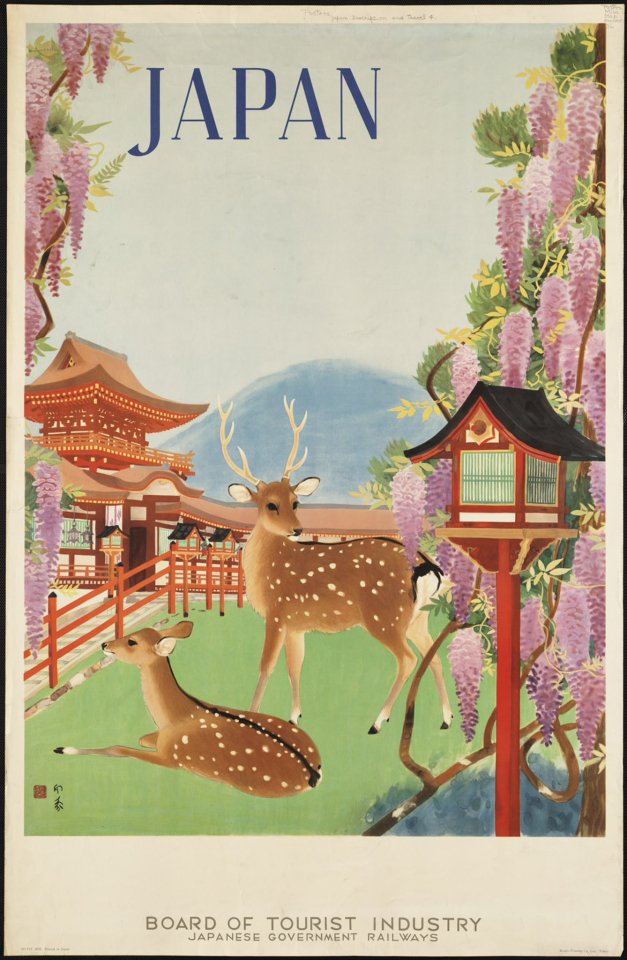
Japanese Government Railways Posters created in the 1930s to attract foreign tourists.
323 notes
·
View notes
Text
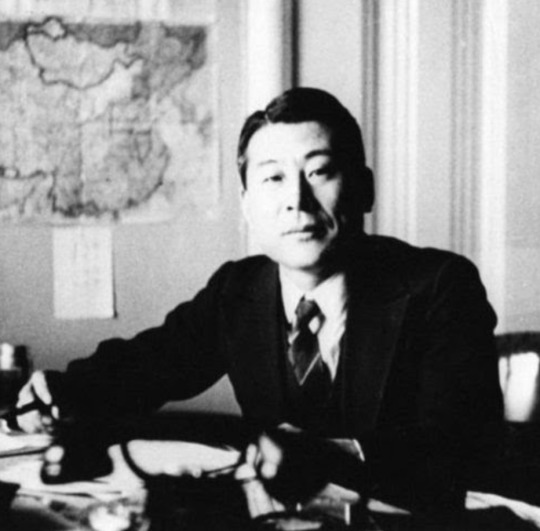
Chiune Sugihara was a Japanese diplomat in Lithuania who put his family and career at risk by issuing thousands of hand-written transit visas to Jewish refugees fleeing Eastern Europe.
Chiune was born to a middle class family in Mino, Japan on the first day of the 20th century – 1/1/00. In elementary and high school he was a top student, and his father wanted him to become a doctor. Chiune’s own dream was to enter the foreign service, and he deliberately failed the medical school entrance exam by writing only his name on the test. Instead Chiune attended Waseda University and majored in English. He also joined a Christian fraternity to practice his English.
In 1919, Chiune passed the Foreign Ministry Scholarship exam, and served in the Japanese Imperial Army as a 2nd Lieutenant stationed in Korea. He resigned his commission in 1922 and trained for the Foreign Ministry, learning Russian and German in addition to English. He aced the qualifying exam and was sent to work in the foreign office in Harbin, China.
Chiune’s strong moral compass led him to resign his post as Deputy Foreign Minister in Manchuria because of rising Japanese violence against the Chinese (just two years later was the horrific Rape of Nanking by the Japanese Imperial Army.) Chiune returned to Japan, where he married Yukiko Kikuchi. They later had four sons.
Next Chiune went to Helsinki, Finland, where he worked as a translator for the Japanese delegation. In 1939, Chiune became vice-consul of the Japanese embassy in Kauna, Lithuania. Part of his job was to find out if Germany planned to attack the Soviet Union, and to relay any information about this to his bosses in Berlin and Tokyo.
In 1940, the Soviet Union occupied Lithuania. At that time, approximately 1/3 of Lithuanians were Jewish, many of them Torah scholars. The USSR viciously persecuted Jews, especially religious ones, and the Jews of Lithuania were desperate to escape the country – especially because Nazi Germany was occupying more and more of Eastern Europe and would soon be in Lithuania. Hundreds of them, mostly Orthodox, visited the Japanese consulate to beg for exit visas to Japan. The official Japanese policy was that candidates for visas must go through elaborate bureaucratic procedures and pay significant sums of money. Chiune contacted his superiors at the Japanese Foreign minister to ask if the rules could be relaxed to help Jewish refugees. His request was denied, as were his next two requests.
Chiune could have thrown up his hands and told the Jews there was nothing he could do for them, but instead, as he did in China, he was governed by his strong sense of right and wrong, rather than soulless bureaucrats. He ignored his orders and started issuing ten-day visas for Jews to travel through Japan on their way to safe havens like Shanghai, China, where 20,000 Jews rode out the war safely.
As word got out about the Japanese visas, Jews from all over Lithuania as well as Poland began to swarm Chiune’s office. He simply wouldn’t say no to anybody, and spent 18-20 hours a day (!) painstakingly writing visas by hand. He created a month’s supply of visas every single day from August to early September 1940, providing an escape route for thousands of Jews. On September 4, the Japanese consulate in Kauna was closed and Chiune had to leave the country. He was determined to create as many transit visas as possible, and continued doing so up until the last minute. At Kanuas Railway Station, a crowd of Jews gathered to say goodbye. Right before boarding the train, Chiune bowed deeply and cried out, “Please forgive me! I cannot write anymore. I wish you the best!” Someone in the crowd shouted, “Sugihara! We’ll never forget you! I’ll surely see you again!”
Chiune was reassigned to East Prussia, then Prague, and then Bucharest, Romania. When the Soviet Union occupied Lithuania in 1944, Chiune and his family were imprisoned in a POW camp for a year and a half. Finally they were released in 1946 and returned to Japan, but the foreign office had heard about his unauthorized visas, and he was forced to resign. At about this time, the Sugihara’s youngest son died of leukemia at age seven.
Unemployable in Japan, Chiune made use of his excellent Russian language skills and spent the next 16 years working in the Soviet Union while his wife and sons stayed in Japan. Chiune’s exceptional heroism was unknown for many years, until 1968, when he was contacted by Yehoshua Nishri, an attache working at the Israeli consulate in Tokyo. Nishri spent his youth in Poland, and heard stories of the legendary Japanese hero. Nishri made it his mission to publicize Chiune’s heroic acts, and the next year, 1969, Chiune traveled to Israel as an honored guest of the Israeli government. Jews he’d saved lobbied for him to be recognized as Righteous Among the Nations by Israeli Holocaust Memorial Yad Vashem, and in 1984 he received the honor. At that time he was too sick to travel, so his wife and son Nobuki accepted the award on his behalf.
Chiune was asked why he risked everything to help thousands of strangers. He answered, “You want to know about my motivation, don’t you? Well. It is the kind of sentiments anyone would have when he actually sees refugees face to face, begging with tears in their eyes. He just cannot help but sympathize with them. Among the refugees were the elderly and women. They were so desperate that they went so far as to kiss my shoes. Yes, I actually witnessed such scenes with my own eyes. Also, I felt at that time, that the Japanese government did not have any uniform opinion in Tokyo. Some Japanese military leaders were just scared because of the pressure from the Nazis; while other officials in the Home Ministry were simply ambivalent. People in Tokyo were not united. I felt it silly to deal with them. So, I made up my mind not to wait for their reply. I knew that somebody would surely complain about me in the future. But, I myself thought this would be the right thing to do. There is nothing wrong in saving many people’s lives… The spirit of humanity, philanthropy… neighborly friendship… with this spirit, I ventured to do what I did, confronting this most difficult situation – and because of this reason, I went ahead with redoubled courage.”
Chiune Sugihara died in Japan on July 31, 1986. Despite being a hero in Israel, and among Jews worldwide, he was completely unknown in his own country. Even his own children didn’t know what he had done. A huge delegation from around the world attended Chiune’s funeral, and only then did he become known in Japan.
Chiune received many awards and accolades, most of them posthumous. Among them are Sugihara Streets in Vilna, Lithuania, and Jaffa and Netanya in Israel. There is a Sugihara House Museum in Kaunas, and a park in Vilna where 200 trees were planted on his 100th birthday. There is a life-sized statue of him in Little Tokyo in Los Angeles, featuring a plaque with a quotation from the Talmud, “He who saves one life, saves an entire world.” In 1998, Chiune’s widow Yukiko traveled to Israel and was warmly received by survivors who’d been saved by her husband. There is a Sugihara park in Jerusalem, and he was featured on an Israeli postage stamp in 1998. The Lithuanian government declared 2020 “The Year of Chiune Sugihara.” He has been the subject of multiple works of art, including books, films and a play.
It’s estimated that over 100,000 people are alive today because of the brave actions of Chiune Sugihara.
108 notes
·
View notes
Text

Yuzuru Okada, Japanese Family Crests, Tourist Library: 37, Board of Tourist Industry, Japanese Government Railways, Tokyo, 1941

(via Mark Holt)
40 notes
·
View notes
Text
I was re-watching ep. 52 of Fairy Tail, and something interesting caught my eye.
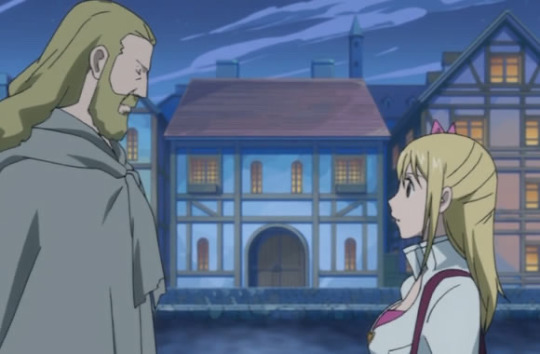
When Lucy and her dad are talking, he specifically says (in the subtitles anyways) that “Heartfilia Railways was confiscated”. Which got me thinking, what can get a company confiscated? I’m operating with American laws, but I’m going to go ahead and assume that Japanese laws work more or less the same way from what I skimmed through.
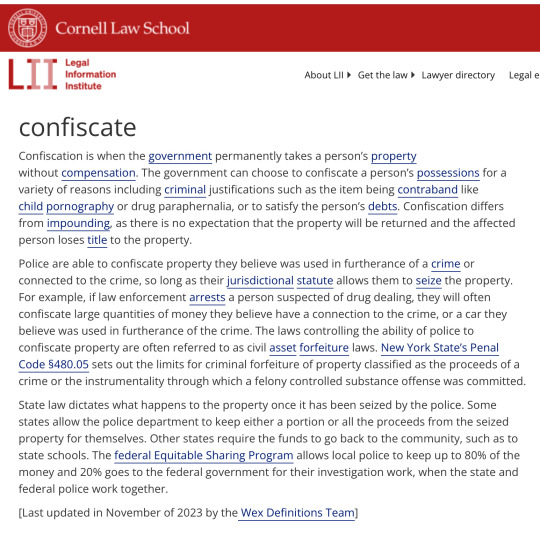
I attached a screenshot of the definition via Cornell, but basically the gist that I understand is that the government can confiscate property or possessions for reasons like criminal justifications [aka drug paraphernalia, etc] or to satisfy a person’s debt. Based off this, is it too much to assume he was faced with consequences for hiring Phantom Lord to basically kidnap Lucy, and subsequently kicking off a guild war?
This is me admittedly just speculating with literally a google search’s understanding of basic confiscation law and I’m probably using the term incorrectly, but the thought that Jude actually faces consequences for his part in the whole thing is actually pretty interesting to me.
Food for thought I guess.
#did I study law in college? no. did I do a ton of research before making this? also no.#but it made me curious#and I think it’s a very interesting background implication idk man#of course the confiscation could have smth to do with the fact he thought he needed 10k to get a train ticket#but hush let me have my meaningful subtext#text post#fairy tail#lucy heartfilia#jude heartfilia#my writing#ft
18 notes
·
View notes
Text
Today I want to rant at length about highlight a plot-relevant but otherwise rather dry line from Shido's Palace, simply because it's been living rent-free in my head for days and I'll die if I don't.
And up front I want to say: this is not intended as translator bashing, shit like this is rarely on the translator, though I will possibly get a little aerated at times. More about that at the end.
This is really long, and probably very boring. So to summarise quickly:
Ooe's "diplomat" and "president of some company" are the Minister for Transport and the railway company president from the 4/10 cinematic with Sae and the SIU director;
Shido wasn't "specially appointed", he's the Minister of State for Special Missions, likely with oversight for either the PTs or the psychotic breakdowns;
being a pro translator sucks;
something about a well.
my least favourite line so far
Shadow Politician
春先に地下鉄事故があっただろう?狙ったのは、あの運転士だからな。
harusaki ni chikatetsu jiko ga atta darou? neratta no wa, ano untenshu da kara na
Do you recall the subway accident early last spring? The one I had targeted was that engineer.
nb—this "engineer" is the train driver. I didn't get this at all, but apparently train drivers are called engineers in the US? This is a good example of how something you think is a mistranslation may not be.
There is an occasion where the guy is referred to as a "driver", but this is actually 車掌 shashou—in Japanese, a conductor in the British sense, the member of staff who is not the driver, but walks up and down checking tickets. This is meant to hint to us, I suspect, that the NPC saying this may not be a reliable source—he's making some spooky claims, after all. Yet again, in America, the conductor can be the driver of the train...? IDK, confusion abounds.
But on to the important bit:
Shadow Politician
目障りな国交大臣と、現政権派の社長のクビを取るためだった。mezawarina kokkou daijin to, genseiken-ha no shachou no kubi o toru tame datta
It was to take out the president of some company and a diplomat who sided with current government.
Full disclosure: I have never liked this line. It screamed of being mistranslated. "The president of some company"? Ooe had this guy destroyed, and he can't be specific? And "a diplomat"? This has come from nowhere—I can't think of another diplomat in P5. It just all seems so random. And it is random. Because this was meant to close up a background plot element from the start of the game, and it just... doesn't any more.
So, for this one, I'm just going to break out the big red DENIED stamp again:

The hell of it all is that I can see what they did here, so I'm going to go through it at excessive length, as like... an object lesson in what not to do. Not just for you, but for me.
And I need to be clear up front that I'm not an authoritative source on the Japanese language. I'm not fluent, my Japanese is barely passable (which is why asks, comments and discussion on my language posts are all always super welcome, btw, just like for everything else I post). I'm just a weeb on the Internet, who constantly posts assertions and theories that future me will hate. Bring your salt shaker.

Quick glimpse behind the curtain: this is from my Google doc for Shido's Palace. You have the textbox code, the speaker, then the text in Japanese, romaji and the localisation. Usually these days I don't add the romaji (it's not good for your reading), but lines that go into posts get it temporarily.
Words I don't know, or had to verify (like shachou, where I wanted to know if it was always a company president or if it could be a role within a political faction), or lore/grammar notes, all get comments, which are highlighted in yellow.
the peril of dictionaries
I'm bilingual English/Welsh-speaking; until I was fifteen, I was educated through the medium of Welsh. So I got taught very early on about the correct use of dictionaries. The exact example I remember is that a past pupil (probably apocryphal) wanted to put "Well, Dad was angry!" into Welsh. And they had looked up "well"....
ffynnon, roedd Dad yn grac!
Well, Dad was angry!
This is a ffynnon:

It's a funny story. The point is that you should always flip to the other half of the dictionary to verify the meaning you found. Or these days, with the Internet and all, we get to check multiple dictionaries, corpuses and sources! And a riotously good time it is.
part one: who was that mysterious diplomat
The main phrase I want to focus on is 国交大臣 kokkou daijin. This is what has been rendered "a diplomat" in the localisation. On first glance, that's a string of kanji I don't know: country, the right-hand side of the second half of 学校 gakkou (school), something about a big man... is that read daijin?...
Maybe it's a yojijukugo—a fixed four-kanji phrase with an often-idiomatic meaning? Let's put the whole thing into Jisho and see what we get.
(Incidentally, I bash Jisho constantly, but it's still my first stop because it's fast and often good enough. You just shouldn't rely on it for anything critical; trust, but verify.)
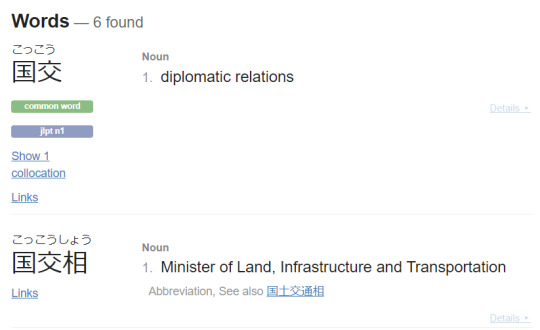
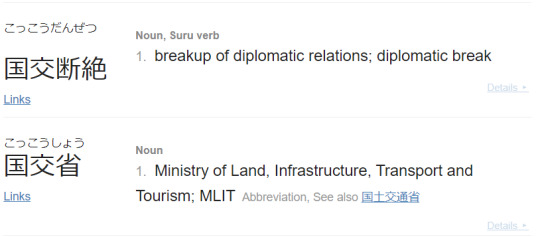
B|
Well, there's no yojijukugo. But one glance at that tells us that Ooe's "diplomat" is not a diplomat at all. Ooe's "diplomat" is the Minister for Transport who was brought down as a result of this subway crash in April. You might have thought Shido had this guy taken out, but no. He did it for Ooe. He crashed a subway train, injuring 80 people, as nothing but a favour to Ooe.
But why is it using kokkou, "diplomatic relations"? Well, Jisho gives us a convenient "see also" link. Let's take a look:

You see what they did there? The full phrase is 国土交通相 kokudo koutsuu-shou, "Minister for (National) Land and Transport". But nobody wants to say that. So you strike out some of the kanji. The word becomes kokkoushou—but everyone still knows who you mean.
Let's do a bit of that verification I mentioned. Here's Wikipedia:

HmmMM. Notice how the Minister and the Ministry are read the same; only the last kanji changes. But we're still on track.
Let's click over to Japanese Wikipedia. What do they have to say?

And there it is again, highlighted: our old friend 国交 kokkou, "diplomatic relations". "In Japanese, this is commonly abbreviated as kokkoushou".
daijin
How about 大臣 daijin? It looks like it just means "big man" or "important man", but what does it actually mean? Again, let's start with Jisho:
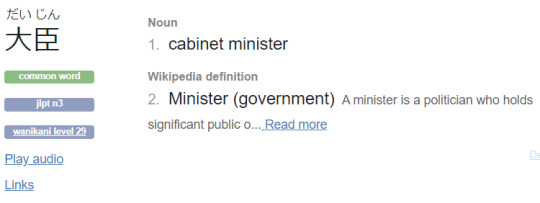
... B|
Jisho offers us a bunch of "further reference" links, so I'm going to go straight to Japanese Wikipedia for this one—which sends you to an old revision of the page, by the way; be sure to go to the latest one:
大臣(だいじん)は、本来は皇帝や国王などを輔弼して国政を司る重要官職だが、今日では一般的に君主制か共和制かにかかわらず、政府を構成し、各行政部門の長に位置する官職を指す。閣僚ともいう。
Historically, 大臣 daijin referred to the high position of those responsible for matters of state, who advised emperors and kings on those matters. However, today it generally refers, regardless of whether the government in question is a monarchy or republic, to an official who leads a division of government.
... ... B|
In other words, a cabinet minister. Seems to sum it up pretty well, but let's just look at the invaluable ALC corpus on this:
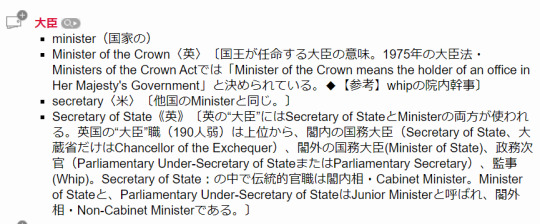
So we have it. A daijin is unquestionably a cabinet minister. And Ooe is unquestionably talking about the Minister for Transport.
last-minute edit: I actually wrote this entire post, preened for completing it, then closed it in my drafts and forgot all about it. Until I opened my grammar text to a random page and found this:

EVEN MY GRAMMAR BOOK KNOWS.
Actual grammar books are a bit obsolete in 2023, but that is a great one if you're in the market. Just don't get the Kindle edition, it's illegible on Kindle which is probably not what you want.
Incidentally, yes, a Diet member is sensei—you can often hear people refer to Shido that way.
but we can also backreference this one
Another cool thing we can do is get context-relevant examples. That is, we can search the P5 script itself to see how it uses daijin and kokkou daijin.
Two lines use kokkou daijin. One is this line of Ooe's. The other is a news story, which gets it right:
Newscaster
国交大臣の辞任に伴い、与党への批判が高まっており⋯
kokkou daijin no jinin ni tomanai, yotou e no hihan ga takamatte ori...
Criticism of the ruling party has surged, following the resignation of the Minister of Transport.
But people talk about the Minister quite a bit. What phrases do they use? Well, sometimes he's simply the daijin—"the Minister"; this usually becomes "Minister of Transport" for context. Sometimes he's the kokkoushou, as we discussed above. And often, on the news, he gets his full title—he's the kokudo koutsuu daijin.
Usually, daijin by itself in P5 is part of 総理大臣 souri daijin—the prime minister.
meanwhile in shidoland
In passing, the MoT is not the only one who gets translated out of the script. You might remember from the calling card cinematic that Shido is the "Minister of State for Special Missions".
Makoto tries to tell us this at one point:
Makoto
特命担当大臣現職の閣僚よ
tokumei tantou daijin genshoku no kanryou yo
He was specially appointed to the position. That's his current title.
He's the current Minister of State for Special Missions.
(What is that, exactly? I'm not gonna do a huge research effort on this one right now, this post is already longer than the Nile and dry as sand, but they appear to be appointed to deal with things that are a big deal—the link gives you examples of some of the issues they've been appointed for. It's not inconceivable that Shido was appointed to the Cabinet to deal with the national crisis of psychotic breakdowns and mental shutdowns that he started. Either that, or the PTs themselves—he does talk about them an awful lot.)
and that's not all
There is, of course, a real Japanese Minister for Transport. We can put kokkou daijin into Google (with a little は on the end to filter Chinese-language sites), and what do we get back? The first hit is the Wikipedia page for the Minister for Transport.
My guess would be that the translator knew the word kokkou, but they didn't have an encyclopaedic knowledge of Japanese politics. So they read kokkou daijin as some kind of important diplomat.
part two: in which we invent time travel
And that was only the first of the two things that made me hate my life about that textbox. Let's bring the line back:
Shadow Politician
目障りな国交大臣と、現政権派の社長のクビを取るためだった。mezawarina kokkou daijin to, genseiken-ha no shachou no kubi o toru tame datta
It was to take out the president of some company and a diplomat who sided with current government.
The second thing that got under my skin was this:
現政権派の社長
genseiken-ha no shachou
This means, in the terms of the localisation, "a company president who sided with current government". But... what is even going on here?
In Japanese, modifiers go before the things they modify, right? Like ... always. I'm going to cite the slightly-tongue-in-cheek but also inestimable Jay Rubin (probably best known as Haruki Murakami's English translator) on this:
... by about the middle of the seventh century, the Emperor, who still wielded actual power then, made a rule, maybe the one rule that really works in the language and never gets broken: “From this day forward, subjects will always come before their verbs. And, just to keep things neat, modifiers will always come before what they modify.” Never in all these centuries have there been any exceptions—at least not in normal syntax....
Shōmetsu shita zō is “The elephant that vanished”—a fragment, just a noun with a modifier in front of it. By putting it before the zō, we’ve changed the shōmetsu shita into a modifier. I’m going to go way out on a limb here and call anything that modifies a noun an adjective. Shōmetsu shita zō (literally, “vanished elephant”) works exactly the same way as utsukushii zō (“beautiful elephant”).
(That's from the book "Making Sense of Japanese", by the way, which y'all should totally read if you can find a copy. It's one of Kodansha's little books, which are all worth at least a glance; they published tons of them, with titles like "All About Particles" and "How To Sound Intelligent In Japanese" and etc etc etc.)
back to our sentence
So how is this translation breaking that rule? Let's look at it again, with the problematic parts bolded:
目障りな国交大臣と、現政権派の社長のクビを取るためだった。mezawarina kokkou daijin to, genseiken-ha no shachou no kubi o toru tame datta
It was to take out the president of some company and a diplomat who sided with current government.
現政権派 genseiken-ha is the current government; the current administration. No problems there. It's just in the wrong place.
kokkou daijin, we established, is the localisation's "diplomat". genseiken-ha no translates as "aligned with the current government". But genseiken-ha is after kokkou daijin. It cannot be modifying it. It can't have been taken for a relative clause—what Jay Rubin framed as an adjective in the quote up there—because we still have the two people the sentence describes, the "diplomat" and the businessman; the sentence has not been read as talking about a diplomat who is also a government-boosting company president.
We should have, literally, "an eyesore of a minister for transport" and "a company president who sides with current government". But we just... don't.
Is it possible it doesn't make sense that a company president would be aligned with the government? Has the sentence been rearranged for that reason? But this is essentially what Okumura does: he's a company boss aligned with a powerful politician. So are the TV and IT Execs whose shadows we meet, for that matter. They are not in politics themselves, but they network with politicians. Big business and politics are always hand-in-hand.
All of this gives us the following working version of the translation:
It was to take down that intolerable Minister of Transport and a company president who supported the government.
And on that note....
who is that mysterious company president
"the president of some company", the localisation says. This seems a bit vagued up. Are there any company presidents we should be aware of here?
The answer is yes:

On 4/10, in the cinematic after the crash, the SIU Director talks at length about how this is the fault of "the company and the government". Of course he does—he knows very well what's happened, and he knows where the blame is to be assigned:
SIU Director: It's less of an operating accident and more of a crime of the company and the government.
SIU Director: Site inspectors apparently reported all of this six months ago—the deterioration of the tracks and the ATC.
And the last two lines in full, since they diverge:
SIU Director
それを会社が隠ぺい…国交省も故意に見逃したフツがある。
sore o kaisha ga inpei... kokkoushou mo koi ni minogashita futsu ga aru
Seems the railway company and the Ministry of Transport both turned a blind eye to the truth.
So the railway company covered it up... and the Ministry of Transport did what they do best: they turned a blind eye to it..
This is just a slight difference in emphasis: the railway company allegedly performed a deliberate coverup, and it was the Ministry that did their normal thing, and chose to overlook that coverup....
But note that "railway company" here is just 会社 kaisha, "company". Originally, it was obvious from context; the localisation clarifies it. But when Ooe later mentions a 社交 shachou, a "company president", in the same obvious-from-context way, it has not been picked up on—our very personal railway company president has become "the president of some company". Who was important enough for Ooe to personally destroy, but not important enough for him to remember where he worked.
SIU Director
隠し通せんよ。大臣の進退まで行くだろう。
kakushitoosen yo. daijin no shintai made iku darou
There's no way they can hide. This will go all the way to the top.
They can't keep this hushed up forever. By the end of this, the transport minister's job will be on the line.
... but here's the first real appearance of the Minister for Transport, with the SIU Director—who, again let's not forget, knows this crash was engineered in part to get that minister—not just saying this incident will "go all the way to the top", but that it will specifically end with them coming for the minister's job.
where did we come from, where did we go
Where does that leave us with the sentence?
It was to take out the president of some company and a diplomat who sided with current government.
It was to take down that intolerable Minister of Transport, and the president of the railway company. He supported the government, after all.
We've broken that little genseiken-ha out into its own little explaining sentence, since it's hard to phrase as one sentence in natural English. And now you know.
btw, leave the translators alone
Look, this is far from the best translation I've ever seen. We should be mad about this, right? Well... no.
As a hobbyist, I have the luxury of focusing on a single fandom, spending hours, days, or weeks thinking about single scenes, researching context, language and concepts, confirming I've understood things to the best of my ability. Your average animanga/JRPG translator is not being paid well enough, or given nearly enough time, to do this. They cannot be expected to do this.
This is not, not, NOT on the translator. Read that ten times. We are supposed to go from our second language to our native tongue; that's how translation works best. So there will always be areas of confusion like this, things that need clarification and research. Japanese media translation requires a vast knowledge of differently arcane terms depending on the work; nobody will know them all.
Who is this on? It's on Atlus, for skimping on and rushing not only the translation but the editing; they did the English localisation of a massive property on the cheap. Something like this should have been caught by the editor, but honestly P5's editing (including the way things are finalised in English, and the overall polishing of the script) tends to come in for more criticism than the translation per se.
tl;dr: blame the company, not the poor translator who was most likely just one of us trying to make a shitty living with something they love, and a skill they worked their ass off for.
#persona 5#p5 meta#japanese language#translation#long post#very long#very boring#you have been warned
56 notes
·
View notes
Note
to get the most on-brand one for you I can think of out of the way - VOR for Itō Hirobumi?
Man, all of these really do need essays, I alas lack the spoons/time for that now, so it will just be some thoughts. Ito Hirobumi is a great case! For those who don't know, one of the 'founding fathers' of the Meiji Restoration and Japan's first and longest-serving Prime Minister.
As Meiji "revolutionary" is VOR is very high - he is one of the "Chosu five" who were (illegally!) sent to study abroad in the United Kingdom as youths, which pivoted him from a reactionary to someone, awed by Britain's power, committed to modernizing and westernizing Japan. While that process was inevitable, it being done on Japan's terms was far from inevitable - many wanted to resist western systems & norms. He also had several unique relationships with westerners that paved the way for foreign expertise on everything from railways to bureaucratic design. So in 1871 in particular, when he was building ministries for the new government and eventually became the Minister of Public Works in 1873, he was building a modernized, western systems that many others would not have wanted to build, or not known how to build. Japan's transition in the 1870's would have been notably messier without him.
Later on as Prime Minister his VOR declines. He adopts "consensus centrism" as his modus operandi, privileging stability over reform in the retrenchment era of the 1880's. Not a bad decision, but it was also not nearly as contested, he was making decisions others would have made. And he fails to anticipate the rise of political parties, suffering defeats later at the hand of the Kenseito faction that honestly better leaders would have seen coming. He was a ministry man first, politician second in some ways.
He did play a notable role in the resolution of the 1885 Qing-Japan crisis over Korea - after a failed, Japanese-sponsored coup in 1884 that China helped crush, de-facto war in Korea existed between the two factions which his personal intervention quashed with the Convention of Tientsin that normalized relations for the next decade. From my understanding, this was something he very much championed, with other factions in the government being muddled or bellicose, and it came from his experience as the tax minister understanding that Japan's economic growth was being driving by a complex import-export supply chain around textiles and raw materials with China, which Japan did not want to disrupt. This moment is a high VOR moment for him imo, way better to wait for a decade.
Certainly would love to know more, you ideally truly do go case in these scenarios.
22 notes
·
View notes
Photo

Great Kantō earthquake (1923) and the Massacres
The Great Kantō earthquake struck the Kantō Plain on the main Japanese island of Honshū at 11:58:44 JST (02:58:44 UTC) on Saturday, September 1, 1923. Varied accounts indicate the duration of the earthquake was between four and ten minutes. Extensive firestorms and even a fire whirl added to the death toll. The Kantō Massacre began on the day of the earthquake. The earthquake had a magnitude of 7.9 on the moment magnitude scale with its focus deep beneath Izu Ōshima Island in Sagami Bay. Estimated casualties totalled about 142,800 deaths, including about 40,000 who went missing and were presumed dead.
Because the earthquake struck when people were cooking meals, many were killed as a result of large fires that broke out. Fires started immediately after the earthquake. Some fires developed into firestorms that swept across cities. Many people died when their feet became stuck on melting tarmac. The single greatest loss of life was caused by a fire whirl that engulfed the Rikugun Honjo Hifukusho in downtown Tokyo, where about 38,000 people were incinerated after taking shelter there after the earthquake. The earthquake broke water mains all over the city, and putting out the fires took nearly two full days until late in the morning of September 3.
A strong typhoon centered off the coast of the Noto Peninsula in Ishikawa Prefecture brought high winds to Tokyo Bay at about the same time as the earthquake. These winds caused fires to spread rapidly.
Many homes were buried or swept away by landslides in the mountainous and hilly coastal areas in western Kanagawa Prefecture; about 800 people died. A collapsing mountainside in the village of Nebukawa, west of Odawara, pushed the entire village and a passenger train carrying over 100 passengers, along with the railway station, into the sea.
The RMS Empress of Australia was about to leave Yokohama harbor when the earthquake struck. It narrowly survived and assisted in rescuing 2000 survivors. A P&O liner, Dongola, was also in the harbor at the moment of disaster and rescued 505 people, taking them to Kobe.
A tsunami with waves up to 10 m (33 ft) high struck the coast of Sagami Bay, Bōsō Peninsula, Izu Islands, and the east coast of Izu Peninsula within minutes. The tsunami caused many deaths, including about 100 people along Yui-ga-hama Beach in Kamakura and an estimated 50 people on the Enoshima causeway. Over 570,000 homes were destroyed, leaving an estimated 1.9 million homeless. Evacuees were transported by ship from Kantō to as far as Kobe in Kansai. The damage is estimated to have exceeded US$1 billion (or about $16 billion today). There were 57 aftershocks.
Ethnic Koreans were massacred after the earthquake. The Home Ministry declared martial law and ordered all sectional police chiefs to make maintenance of order and security a top priority. A false rumor was spread that Koreans were taking advantage of the disaster, committing arson and robbery, and were in possession of bombs. Anti-Korean sentiment was heightened by fear of the Korean independence movement.
In the confusion after the quake, mass murder of Koreans by mobs occurred in urban Tokyo and Yokohama, fuelled by rumors of rebellion and sabotage. The government reported that 231 Koreans were killed by mobs in Tokyo and Yokohama in the first week of September. Independent reports said the number of dead was far higher, ranging from 6,000 to 10,000. Some newspapers reported the rumors as fact, including the allegation that Koreans were poisoning wells. The numerous fires and cloudy well water, a little-known effect of a large quake, all seemed to confirm the rumors of the panic-stricken survivors who were living amidst the rubble. Vigilante groups set up roadblocks in cities, and tested civilians with a shibboleth for supposedly Korean-accented Japanese: deporting, beating, or killing those who failed. Army and police personnel colluded in the vigilante killings in some areas. Of the 3,000 Koreans taken into custody at the Army Cavalry Regiment base in Narashino, Chiba Prefecture, 10% were killed at the base, or after being released into nearby villages. Moreover, anyone mistakenly identified as Korean, such as Chinese, Ryukyuans, and Japanese speakers of some regional dialects, suffered the same fate. About 700 Chinese, mostly from Wenzhou, were killed. A monument commemorating this was built in 1993 in Wenzhou.
In response, the government called upon the Japanese Army and the police to protect Koreans; 23,715 Koreans were placed in protective custody across Japan, 12,000 in Tokyo alone. The chief of police of Tsurumi (or Kawasaki by some accounts) is reported to have publicly drunk the well water to disprove the rumor that Koreans had been poisoning wells. In some towns, even police stations into which Korean people had escaped were attacked by mobs, whereas in other neighborhoods, civilians took steps to protect them. The Army distributed flyers denying the rumor and warning residents against attacking Koreans, but in many cases, vigilante activity only ceased as a result of Army operations against it. In several documented cases, soldiers and policemen participated in the killings, and in other cases, authorities handed groups of Koreans over to local vigilantes, who proceeded to kill them.
12 notes
·
View notes
Text
I'm still (still!) trying to figure out the Chinese Debt Problem in terms I can understand and this is what I've got so far:
between 1980 and 2010 the Chinese economy grew like crazy thanks to huge amounts of infrastructure investment.
this makes sense because before 1980 it didn't have any infrastructure to speak of (thank you warlords, Japanese, civil war, and Mao) so there was a ton of potential to scale up.
how it worked was very simple: the government(s) (central and local) financially repressed the people (made them work their ass off for low wages) and subsidised export businesses (with favourable exchange rates) while building roads, railways, docks, airports, dams, power stations, and all the other stuff you need to be the industrial centre of the world.
simultaneously the country urbanised at a furious pace, with local governments making huge amounts of money selling land to property developers who tiled it with apartment blocks for everyone to move into and also speculate on as the prices kept going up (and up, and up) and there wasn't much else (legal) available to invest in (see financial repression).
oh and they get rid of all the Cultural Revolution era stuff and let smart kids go to university again.
productivity soars! and the entire world outsources its manufacturing to China, leading to the fastest and most complete technology transfer / upskilling process in world history.
you might think all the financial repression and hard work would make people mad, but the economy is growing so fast they're all getting better off in absolute terms, so they're cool with it (after the initial adjustment pains are dealt with in 1989).
"the" debt level (speaking loosely) is going up quickly as the government(s), banks, state owned enterprises, and private companies are all borrowing like mad (from each other, and the people) to fund this breakneck expansion, but it's driving productivity up so quickly that the economy is growing faster than the debt, making it completely manageable and not a problem at all.
by 2010 this program stops working: infrastructure has reached capacity and you can't boost productivity by building more highways and railways, there are more university graduates than there are jobs, everyone who matters already has two apartments and the people who don't can't afford one because they're so expensive, and flooding the world with cheap subsidised goods is pushing other countries into debt and unemployment and starting trade wars.
now the debt is still rising quickly but the economy isn't keeping pace any more, which means the interest payments are going to take up an increasing fraction of future budgets, state owned enterprises are going to have to cut back and fire people, private businesses are going to go broke, and things rapidly get worse from there.
China needs to change tack in order to keep growing its economy instead of drowning, but how? there are three options:
mass unemployment! stop subsidising export industries, stop madly building highways and apartments no one needs or can afford, and let the chips fall where they may! obviously this is completely out of the question as it would destroy the legitimacy of party rule.
hyperinflation! if you want to keep buying stuff that doesn't pay off, just keep printing more money, eventually it won't be worth anything any more but that's somebody else's problem! obviously this is also completely out of the question, nobody voluntarily destroys their economy like this on purpose, this is what happens if everything else fails.
rebalance the economy towards consumption! this is the official government policy and coincidentally the only option that actually makes sense: pay people more, ease off on the financial repression, stop building stupid stuff, let domestic consumption drive economic growth instead of the export market, and achieve a moderately prosperous society! sadly it's politically impossible to pull off but it's a nice idea.
just keep trudging on with the status quo => nationalisation! if debt keeps rising then private businesses who are constrained by the need to be profitable will exit the market (witness Evergrande, Sunac, etc.) and state owned enterprises that are not so constrained will take over an ever increasing share of the (increasingly planned) economy, with hilariously painful results.
114 notes
·
View notes
Text
Does North Korea have a concept of logistics? (Essay)(Logistics-7)
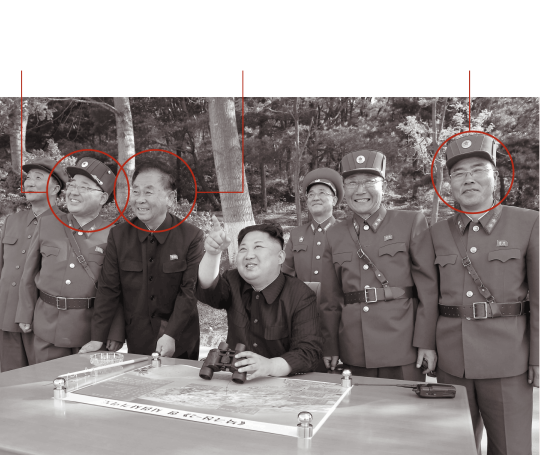
©Thomson Reuters Canada (fools on a picnic)
Modern warfare has three main areas: operations, intelligence, and logistics. The most important of these is logistics, which governs the supply of weapons, food, fuel, clothing, and medicine. It's the most humble field, but in Europe and America, the most talented people become logistics staff.
In preparation for war with Japan, the USA carefully planned for years to cut off Japan's logistics lines and tighten Japan. It's called the Orange Plan. Meanwhile, the Japanese Navy repeatedly practiced fleet battles with the USA. The emphasis was on strategy. “Logistics” versus “strategies.” As a result, Japan suffocated and the USA won completely. To begin with, in the case of Japan, both the army and navy had a tradition of neglecting logistics, believing that as long as the tip of the spear was sharp, one could win with mental strength even on hunger.
Today's North Korea can be seen as a caricature of Japan. Missiles, nuclear weapons, military reconnaissance satellites... ``These ``tips of the spear'' are, of course, for operational purposes, but in the first place, the North Korean people, who have been starving and weakening due to years of failed agricultural policies, how will the North Korean government be able to feed them when war occurs? Isn't the logistics just being handed over to the military? Even if you tried to obtain goods from rich China or Russia, it would be impossible if we destroyed the railways and sunk the cargo ships that provided transportation there. The USA will not hesitate to take that action. This is because it is a shortcut to bring North Korea to its knees. Japan has proven that you cannot win by sharpening only the tip of your spear. North Korea has no concept of logistics. Poor North Korea.
Rei Morishita
北朝鮮は、ロジスティクスという概念を持つか?(エッセイ)
現代の戦争においては、作戦、情報、ロジスティクスの3大主要分野がある。中でも、最重要なのは、兵器、食糧、燃料、衣服、医薬品の補給を司るロジスティクスである。最も地味な分野だが欧米では最も優秀な人材がロジスティクス参謀になる。
USAは、日本との戦争に備えて、日本のロジスティクス線(補給線)を断ち、締め上げる計画を、何年も周到に練った。オレンジ・プランという。一方日本海軍はUSAとの艦隊決戦の演習を繰り返し行った。作戦を重視したのだ。「ロジスティク」対「作戦」。結果は、日本は窒息し、USAの完勝に終わった。そもそも日本の場合、陸軍も海軍もロジスティックスを軽視する伝統があり、言わば「槍の穂先さえ鋭ければ、空腹でも精神力で勝てる」という思い込みがあった。
この日本の戯画とも思えるのが、今の北朝鮮だ。ミサイル、核兵器、軍事偵察衛星・・・「これらの「槍の穂先」は、もちろん作戦用のものだが、そもそも積年の農業政策の失敗で、飢えて衰えている北朝鮮国民を、戦争が起こったとき、どうやって食わせていけるのだろうか?ロジスティクスは、軍に回すだけで手一杯ではないのか。豊かな中国やロシアから物資を入手しようとしても、その交通手段の鉄道を破壊し、貨物船を沈めれば、不可能になるのだ。USAはその行動をためらわず実行するだろう。北朝鮮を屈服させる近道だからだ。「槍の穂先」だけを鋭く鍛えても、勝てないことは日本が実証している。北朝鮮は、ロジスティクスという概念を持つまい。哀れな北朝鮮。
#North Korea#rei morishita#essay#logistics#USA#Japan#Orange Plan#failed agricultural policies#China#Russia#railways#Poor North Korea
5 notes
·
View notes
Text
70s Japan Trends Through the Music Charts (Part 2)
During the 1970s, the Japanese music industry was in the process of forming its identity. In addition to mirroring the musical preferences of the nation, the charts also served as a reflection of the prevailing societal trends and ambitions of that era. In this series, we chronicle the most significant musical trends of the decade.
70s Japan Trend Through the Music Charts (Part 1)
Trend #4: The Impact of Discover Japan
In 1970, Osaka hosted the World Expo, marking a significant milestone for post-war Japan following the 1964 Tokyo Olympics. To accommodate the influx of visitors, the government expanded the rail network, enabling over 60 million people—half of the nation's population—to journey to the World's Fair. However, as the Expo drew to a close after six months, concerns arose about the railways becoming obsolete. So, with the help of the ad agency Dentsu, they devised a campaign to stimulate domestic tourism by rail. The result was "DISCOVER JAPAN," one of the most iconic campaigns of the decade (which, curiously, was partially inspired by Ivy Fashion brand VAN).
"DISCOVER JAPAN" profoundly impacted Japanese society by popularizing solo travel and igniting domestic tourism, particularly among young women who ventured out on their own. This trend was further fueled by the launch of the first female fashion magazines, AnAn and Non-no, both of which extensively covered visits to charming cities across the country. Cities known as "Little Kyoto," which retained their Edo Period architecture and charm, were particularly attractive to these travelers.
Influenced by fashion magazines, these trend-conscious women journeyed to towns throughout Japan, earning them the moniker "AnNon" (a fusion of AnAn and Non-no). Their impact during the 1970s was significant enough to be mentioned in a song by Sada Masashi, one of the decade's prominent folk singers.

"DISCOVER JAPAN," the print and TV campaign devised by Dentsu, is one of Japan's most successful and era-defining marketing campaigns.
Sada Masashi rose to fame in the early 1970s as part of the folk duo Grape before launching a successful solo career. In 1977, his song "Ehagakizaka," which paid tribute to his hometown of Nagasaki, mentioned identically dressed stylish young girls in denim, clutching AnAn and Non-no magazines while photographing their surroundings. This song vividly captured the aspirational girl culture of the 1970s, characterized by "healing" domestic trips in pursuit of tranquility and small pleasures, hippie and boho-inspired fashion, and folk music as the soundtrack.
Masashi Sada's song and the AnNon-zoku tribe aside, "DISCOVER JAPAN," had an immense impact on different layers of Japanese society. And that included the music charts. In 1971, the two best-selling singles, "Watashi no joka-machi" by Rumiko Koyanagi and "Shiretoko ryojou" by Tokiko Kato, surpassed 1 million copies sold. Both perfectly embodied the campaign's spirit in highlighting the hidden beauties of Japan.
"Watashi no jokamachi," or "My Castle Town," marked Koyanagi's explosive debut, selling over 1.3 million copies. This enka-infused kayokyoku ballad paid homage to cities with Edo-like architecture, often centered around a feudal lord's castle, evoking a peaceful, melancholic atmosphere in its lyrics. Rumiko continued to sing about regional Japan's charms the following year with another hit, "Seto no Hanayome" (The Bride of Seto). Meanwhile, the folk-inspired "Shiretoko ryoujou" (Shiretoko Journey) celebrated the unique beauty and culture of the Shiretoko peninsula on Hokkaido Island.
In the same year, other artists also succeeded by spotlighting provincial Japan. Enka superstar Shinichi Mori delved into this theme with "Boukyou" (Nostalgia). At the same time, Yuuko Nagisa found success with a Japanese rendition of The Ventures' "Kyoto Doll," titled "Kyoto no Koi" (Love in Kyoto). She would go on to have another top-selling single with her version of another Ventures song, "Reflection in Palace Lake," transformed into "Kyoto Bojo" (Kyoto Longing).
Trend #5: The Legend of Momoe Yamaguchi
"Aidoru" or "idols" are cute girl/boy-next-door types who sing, dance, act, host TV shows, and star in countless commercials. They stand as one of the cornerstones of the thriving multi-billion yen Japanese entertainment industry. The 70s was an essential era for consolidating this type of star. And one idol, in particular, shone the brightest: Momoe Yamaguchi.
Momoe is a legendary star and an example of an "aidoru" who excelled at everything, exuding sophistication, talent, and sex appeal. The fact she retired from public life at the height of her fame cemented her mythical status.

Momoe Yamaguchi in her prime, the idol industry's gold standard.
In 1972, at the tender age of 13, Yamaguchi auditioned for the talent search TV show "Star Tanjou!" (A Star is Born). Her crisp singing voice and mature beauty immediately captured the industry's attention. Hori Production, the entertainment agency, and Sony CBS label swiftly recognized her potential and signed her. In May 1973, five months after her televised audition, she made her official debut with the single "Toshigoro" (Adolescence). Although Sony had a history of immediate success with newcomers, Momoe's first single received a tepid response, so her label decided to court a bit of controversy for her sophomore outing. "Aoi kajitsu" (Ripe Fruit) had the innocent-looking 14-year-old girl singing, "you can do whatever you want to me, even if they say I'm a bad girl." The racy lyrics worked, and the single was a success.
A few months later, Yamaguchi's backers repeated this formula with "Hito natsu no keiken" (One Summer Experience). The song began with a suggestive promise: "I'll give you the most precious thing a girl has." The lyrics were laden with double entendres, describing a "sweet trap of temptation" that can only be experienced once. She sang, "if the person I love is pleased, then I'm happy. I don't mind if you break it," which could be understood as a reference to a girl's heart or hymen.
The single was an explosive hit, propelling 15-year-old Yamaguchi into the A-list. For the remainder of her career, she was frequently asked about the "most precious thing a girl has," to which she'd always offer a stern-looking reply: "Her devotion."
The young, mature-looking girl singing thinly veiled songs about sexual awakening with a dark, serious-looking image set her apart from the prevalent happy-go-lucky idol aesthetic. However, it wasn't merely reliance on gimmicks that transformed her into a legend. In 1976, after firmly establishing herself as a star, she parted ways with her frequent collaborators, lyricist Kazuya Senke and composer Shunichi Tokura. Beginning with the single "Yokosuka Story," she partnered with the husband-and-wife duo Yoko Aki and Ryudo Uzaki.
Ryudo Uzaki, the frontman of the popular enka rock band DOWNTOWN BOOGIE WOOGIE BAND, infused her kayokyoku tunes with a rock edge. Through her lyrics, Yoko Aki redefined Momoe's image as a confident, clear-eyed girl transitioning into womanhood. Sony initially opposed Momoe's desire to collaborate with Aki and Uzaki, but the partnership ultimately helped her reach her commercial peak.
"Yokosuka Story" was Momoe's first single to reach the number 1 spot on the weekly charts. The Aki-Uzaki duo penned several other hits for her, including "Playback Part 2" and "Sayonara no mukougawa" (The Other Side of Goodbye), and opened doors for her to collaborate with other luminaries of Japanese music. Two of her most memorable hits, "Cosmos" and "Ii hi tabidaichi" (Beautiful Day Departure), both released in 1978, were penned by folk superstars Masashi Sada and Shinji Tanimura of Arisu, respectively. The latter became the theme song for the iconic DISCOVER JAPAN TV commercials.
Speaking of commercials, idols worth their salt can't limit themselves to music. Momoe earned millions as the face of Toyota cars, Fujifilm photographic films, Casio watches, and Glico confectionary products, among others. She also starred in highly rated TV dramas and ventured into the world of film.
Starting in 1974, she appeared in two romantic films per year, always paired with Tomokaza Miura as her co-star. While Momoe pursued various ventures, Miura's acting career primarily revolved around being her on-screen romantic partner. Their undeniable chemistry and the box-office success of their films led to them being known as the "golden combination."
In a concert at the end of 1979, Momoe stunned her audience by revealing that her on-screen partner, Miura, was her real-life boyfriend. In a subsequent press conference in March of the following year, she confirmed her intention to marry him and retire officially. In September, she released her autobiography, which sold over 1 million copies in a month. In October, she bid farewell through a series of TV specials and a concert at Nippon Budokan. Her farewell concert reportedly earned Hori Productions over 20 million dollars, according to figures provided by the agency to Billboard magazine at the time. Momoe's success allowed HoriPro to become one of the best-established entertainment agencies in Japan, a position it still holds today. Her final performance took place at HoriPro's 20th-anniversary event, where she sang "Ii hi tabidaichi." In November, she married Miura and disappeared from the media.
The Japanese public obsession with her never waned. Paparazzi tried to capture her at her son's kindergarten graduation ceremony and doing classes at a local driving school. Many speculated she'd eventually come out of retirement. She never did, which only helped feed the obsession around her.
During the 1970s, Yamaguchi enjoyed immense success, but she was one of many popular female idols. The narrative created by her retirement elevated her to the status of a larger-than-life legend. She became the gifted, beautiful young woman who succeeded as a singer, a TV actress, and a movie star before choosing the ultimate happy ending: marriage. By choosing love, Momoe Yamaguchi, the legendary idol, transformed into an ordinary woman—a real-life fairy tale that resonated deeply with Japanese society.
Her decision was driven by profound motivations. Momoe revealed in her autobiography that she was raised by a single mother, the product of an extramarital affair. Her challenging upbringing and her father's late appearance to capitalize on her fame instilled a deep desire for a traditional, happy family life. She also grew weary of the relentless demands of stardom and the repetitiveness of performing the same songs. Thus, she made a heartfelt choice to relinquish fame and public life to give her husband the most important thing a girl has: her devotion.
Trend #6: Idols' Rise
The term "idol" in the Japanese entertainment industry finds its origins in the French film "Cherchez l'idole" (1963), which enjoyed immense popularity in Japan. Initially, "Aidoru" was used to describe the film's star, Sylvie Vartan, before it evolved into a general term to describe youthful-looking triple-threat domestic stars.
Before the coining of the term, "idol-like" stars had already existed. In the 1930s, Machiko Ashita attracted crowds to the Moulin Rouge Shinjuku and served as the face of several brands. In the 1950s, rockabilly stars enjoyed massive popularity among the youth, and the 1960s saw the rise of manufactured "group sound" bands and the female duo The Peanuts, comprised of twin sisters. Legendary stars such as Hibari Misora, Sayuri Yoshinaga, Teruhiko Saigo, Yukio Hashi, and Kazuo Funaki thrived as both movie stars and successful singers.
However, the 70s marked the consolidation of the "idol" aesthetic and career path, paving the way for the "golden era of idols" in the next decade. Essential for it to happen was the widespread adoption of the medium where idols shine the brightest: television.
TV allowed entertainment agencies to aggressively push their young, fresh-faced talents in front of a broad audience. They populated music and variety shows, commercials, and dramas. They were immaculate, life-sized stars ready to play the part of the nation's sweethearts.
Although history has crowned Momoe Yamaguchi as the ultimate 70s idol, she was just one among many during most of that decade. A closer examination of the numbers reveals that Mari Amachi, a female idol, had the most significant short-term impact during that time.
Amachi was first introduced on the popular TBS TV drama "Jikan desu yo" (It's Time) in 1971, playing "Tonari no Mari-chan" (Next Door Mari-chan). She played the minor role of a cute girl who lived close to the show's primary setting, a family-run public bathhouse, and often appeared by her window, playing guitar and singing. By October, with the backing of the biggest entertainment agency of the era, Watanabe Production, and Sony CBS, 19-year-old Mari Amachi officially debuted with the single "Mizuiro no Koi" (Light Blue Love). It was a hit—the first of many. Mari would be 1972's best-selling act, achieving high sales with four albums and five singles.
Mari's image, characterized by an innocent aura, a happy-go-lucky personality, and frilly dresses as stage outfits, became the prototype for female idols. Her short hair and chiseled smile earned her the nickname "Sony's Snow White," evoking the image of a fairytale princess. Unsurprisingly, she was particularly popular with children, leading Watanabe Pro to license her likeness for various goods, including the coveted "Do-Re-Mi Mari-chan" Bridgestone Cycle bicycle, highly sought after by young girls in the early 70s.
Despite her rapid rise to fame, Mari's time at the top was short-lived. By 1974, another Watanabe Pro idol, Agnes Chan, was already surpassing her in sales. In 1977, Mari's health deteriorated, and she took a lengthy hiatus, officially attributed to thyroid issues but later revealed to be depression triggered by her waning popularity. In 1979, she attempted a comeback, even bagging an endorsement deal for an ultrasonic facial device, one of the year's hit items for women. But her time had passed and she didn't find much success. Eventually, Mari's career took unconventional turns, including involvement in a softcore porn movie, the release of nude photobooks, and a transition to becoming a "fat" talento (TV personality), followed by a weight-loss book.
In 2015, in her last public interview, she revealed that, at 63, she was living in a retirement home in the Tokyo suburbs. Her fan club covered her expenses, while her daughter provided a modest weekly allowance. This marked a stark contrast to her glamorous peak years and serves as a reminder of the challenges idols face in the Japanese entertainment industry, particularly women, and how easily discardable idols can be. It also shows how wise Momoe Yamaguchi was, bowing out gracefully at the right time.
However, Momoe Yamaguchi and Mari Amachi represent two extremes within the realm of idols. While Mari achieved record profits for two years before facing decline and eventual obscurity, Momoe maintained relevance for nearly a decade before choosing to marry her on-screen partner, retire, and become a living legend. Most other 70s idols did not experience such remarkable destinies.
In 1971, two other young idols, Rumiko Koyanagi and Saori Minami, made their debut alongside Mari Amachi. The trio was collectively known as the "shin sannin musume," or the "three new girls." Their joint concert at the Budokan on Christmas of 1972 solidified their shared nickname.

The Shin San-nin Musume. Clockwise: Rumiko Koyanagi, Mari Amachi, and Saori Minami.
Rumiko Koyanagi had her skills honed at the Takarazuka Music School. Takarazuka is a very traditional, all-female theater group, and their training academy is known to be highly rigorous and selective. Koyanagi graduated top of her class but wanted something other than a musical theater career. Instead, her goal was to debut as a solo singer. So she left the Takarazuka Revue and signed with Watanabe Pro and Warner Pioneer label to fulfill her dream. Her first song, "Watashi no joka-machi" (My Castle Town), buoyed by the "Discover Japan" boom, surpassed 1 million copies sold, becoming the best-selling single of 1971.
Rumiko's repertoire predominantly featured enka-influenced kayokyoku. Her classical sound may not have been as appealing to the youth as some of her peers' slightly more modern tunes, but it ensured her stable sales throughout the decade. In her sixties, Rumiko has reinvented herself as a passionate soccer fan and a glamorous senior lady, sharing lifestyle tips and her love for Chanel and Lionel Messi on Instagram. She also conducts dinner shows, a lucrative type of intimate concert usually held at luxury hotels, where fans pay hefty prices to enjoy a multi-course dinner while listening to nostalgic hits.
The third "shin sanin musume" is Saori Minami. Minami didn't have a million-selling debut like Rumiko, nor did she become an instant sales behemoth like Mari. That didn't mean she was less impactful. Quite the opposite. Hailing from Okinawa, still under US occupation during her debut, Saori impressed Japan with her exotic beauty. In 1971 and 1972, she outsold every other female idol in bromide sales. Bromide is the local terminology for photographic portraits of celebrities, and historically, its sales are the best way to gauge how popular an idol is.
Her first single, "17-sai" (17 years old), became a classic and enjoyed enduring popularity, with several artists covering it over the decades. After retiring in 1978 upon her marriage to legendary photographer Kishin Shinoyama, Saori made a comeback in 1991 but has made only sporadic public appearances since then.
Two years after the emergence of the "shin sannin musume," a new trio of newcomers known as the "Hana no Chuusan Trio" or the "Chuusan's Flower Trio" (a reference to the fact all of them were in Chuusan, the third year of middle school) came into the spotlight. Masako Mori, Junko Sakurada, and Momoe Yamaguchi were all revealed in the talent search TV show "Star Tanjou" (A Star is Born). In 1975, by the time they were in their second year of high school (kou 2), they co-starred in the successful film "Hana no Kou 2 Trio."
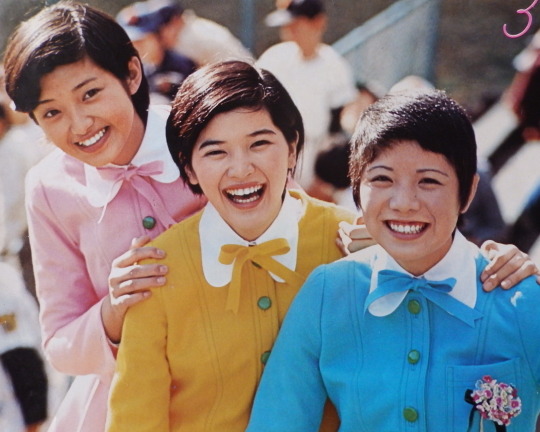
The Hana no Chuushan Trio: Momoe Yamaguchi, Junko Sakurada and Masako Mori.
At 13 years old, Masako Mori secured her place as the inaugural "Star Tanjo" grand champion in 1971. The following year, she debuted under Hori Production and swiftly soared to success. Mori's music was deeply influenced by enka, and by the end of the decade, she had solidified her status as a fully-fledged enka star. In 1986, she tied the knot with enka superstar Shinichi Mori, leading her to retire from the entertainment scene. However, in 2005, following her divorce, the former idol made a comeback, embarking on tours and participating in TV dramas for a few years before ultimately deciding to bid farewell to her career once more on her 60th birthday in 2019. Notably, she shares three children with Shinichi Mori, including TAKA, the lead vocalist of the famous rock band ONE OK ROCK.
Junko Sakurada clinched victory at "Star Tanjo" in 1972 at 14. Subsequently, she signed with Sun Music agency and Victor Music, marking her official debut in February 1973 with the release of "Tenshi mo yumemiru" (Angels Also Have Dreams). Given their similar age, niche, and close debut dates, the industry and some fans pitted her against Momoe Yamaguchi despite their behind-the-scenes friendship. Both idols enjoyed substantial popularity, with Yamaguchi usually holding an edge in sales. The exception was in 1975 when Junpei, as fans affectionately knew her, dominated as the best-selling female idol in music and bromide sales.
In addition to her music career, Junko excelled as an actress. In 1983, she opted to conclude her singing career to dedicate herself solely to acting. A decade later, in 1993, the former idol shocked Japan by announcing her participation in a mass wedding ceremony organized by the controversial South Korean Unification Church at the Olympic Stadium in Seoul. Her husband had been chosen for her by the church.
Her association with the cult brought her career to an abrupt halt. With her image becoming closely linked to the church, TV networks and advertisers distanced themselves from her. Consequently, Junko relocated from Tokyo, devoting herself entirely to her faith and family. Since then, she has made a few comebacks. In 2006, she published a highly-publicized essay book, and in 2013, she celebrated the 40th anniversary of her debut with a special concert. In 2017 and 2018, she returned to the stage, coinciding with her musical comeback and the release of a new album, "My Ideology."
After this project, Junko has remained out of the spotlight, with an official return unlikely unless she completely renounces her ties with the United Church. The cult's controversial image became even more repellent following the murder of former Prime Minister Shinzo Abe in July, committed by a young man who attributed his family's financial and psychological turmoil to the church. Consequently, the cult's unethical financial practices and ties to the ruling Liberal Democratic Party have become widely discussed topics in the country. For Junko Sakurada, her affiliation with the cult has overshadowed her otherwise successful decades-long career.
Completing the trio alongside Junko and Masako was Momoe Yamaguchi. Although Yamaguchi's career has eclipsed that of almost every other idol of the 1970s, she initially experienced the least success among the three young girls. Unlike her peers, both of whom had claimed grand champion titles at "Star Tanjou!," Momoe secured second place at her final showcase. Moreover, her debut single was the poorest-selling among the trio. However, she would ultimately emerge as the definitive idol, and her retirement would serve as the perfect conclusion to an epoch-making career.
While Momoe, Junko, Masako, Mari, Agnes, Rumiko, and Saori, among others, collectively set an impressive precedent for future female idols, male idols also played a significant role in the era. In terms of profitability, male idols reigned supreme, thanks to the unwavering loyalty of their female fanbase.
Johnny Kitagawa, the late founder of Johnny's Jimusho, eventually became the most influential figure in the entertainment industry. He monopolized this niche for decades with his boybands. However, during the 1970s, Kitagawa was just one among many. Although his agency achieved considerable success with the boyband Four Leaves, it was soloist Hiromi Go who briefly held the nation under his sway between 1973 and 1974. Unfortunately for Kitagawa, this period of dominance proved fleeting, as Go departed for another agency in 1976, signaling that Johnny Kitagawa still had much to accomplish to solidify his authority.
With Johnny's domination still on the horizon, Hideki Saijo emerged as the most influential male idol of the 1970s. Saijo enjoyed success with several hit singles, including the ballad "Chigireta Ai," released in 1973, and 1979's "Young Man," a cover of Village People's "Y.M.C.A." Demonstrating the power of devoted fangirls, Saijo became the first domestic solo artist to perform a concert at Nippon Budokan. His popularity quickly transcended the Budokan, propelling him to the status of a stadium headliner and solidifying his position as the decade's top concert ticket seller.
The loyalty of fangirls meant that male idols consistently outperformed any act in ticket sales. In the 1960s, The Tigers, considered one of the pioneers of the "group sound" movement and regarded by many as Japan's first idol group, became the first domestic act to hold a stadium concert. By the following decade, the "group sound" era had ended, but some former band members successfully transitioned into solo careers.
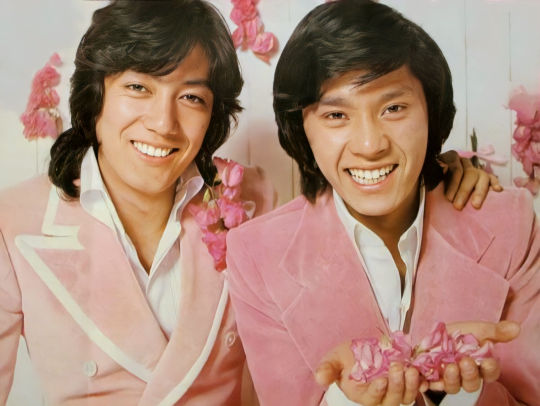
Kenji Sawada and Hideki Saijo, the two stadium-selling male idol superstars from the 80s.
Kenji Sawada, the former lead vocalist of The Tigers, remained a constant presence on the charts throughout the 1970s. Under the guidance of the influential Watanabe Pro agency, Sawada succeeded as a singer and actor. He brought a rockstar aura to his performances, incorporating impactful and extravagant visual elements and pioneering the use of makeup, drawing inspiration from David Bowie and glam rockers. In doing so, Sawada laid the groundwork for visual kei, a movement that would revolutionize Japanese rock in the late 1980s and early 1990s. Nicknamed "Julie" since his early days in the 1960s due to his admiration for Julie Andrews, Sawada continues to thrive as a prominent music figure in Japan, one of the few stars from that era still capable of selling out stadiums.
While girls' adoration often paves the way for male idols to enjoy lengthy careers, there are exceptions to this rule. In 1974, Finger 5 became one of the best-selling idol groups in the country. Comprising five young brothers from Okinawa, they were marketed as Japan's response to the Jackson 5 and consistently churned out hit singles. However, just two years later, their popularity took a nosedive. Several factors contributed to this decline, notably their heavy reliance on the two youngest members, aged only 10 and 12. These youngsters not only grappled with exhaustion from relentless work schedules but also faced the challenges of puberty, causing their voices to change and preventing them from hitting the right notes in their songs. Consequently, Finger 5 lost its appeal.
Finger 5's brief career underscores a crucial aspect of the idol industry: the importance of youthfulness. In Japan's gender-biased society, some male idols from the 1970s were granted the opportunity to age gracefully, evidenced by a few who maintained success well into their 60s and 70s. In contrast, female idols invariably confronted the pressures and inevitable decline associated with aging.
This brings us back to the quintessential idol of that era, Momoe Yamaguchi. By choosing to retire and steadfastly resisting any temptation to reenter the public eye, Yamaguchi effectively became frozen in time at 21 years old, her age at the moment she bid farewell to both showbiz and the public. This solidified her status as a legendary and unattainable icon—an idol who never aged.
70s Japan Trends Through the Music Charts (Part 3)
#enka#kayokyoku#momoe yamaguchi#70s japan#1970s#japanese music#jpop#discover japan#heibon punch#kenji sawada#hideki seiji#junko sakurada#70s idols#finger 5#mari tenchi#rumiko koyanagi#saori minami#four leaves#hiromi go
18 notes
·
View notes
Text
🚃: This emoji is even older than the umbrella emoji from our last tiebreaker round! It was part of Japanese mobile carrier Softbank's original 1997 emoji set, possibly the first emoji set ever released! It was one of only six vehicle emoji included in the set (seven if you count the gas pump -- their version of it included a little car icon), a contrast to the dozens we have today! It looked like this:

[Image: a very small, black and white pixel art image of an oncoming train car]
🌖: The waning gibbous moon was one of the many emoji proposed by the Irish and German governments prior to the 2010 addition of emoji to the Unicode standard! The original planned additions included the full, new, and first and last quarter moons, as are often seen on calendars, but this left out the crescent and gibbous moons, so Ireland and Germany proposed four new emoji to fill in the gaps: 🌒🌔🌖🌘! Now we can express the full cycle of moon phases! 🌑🌒🌓🌔🌕🌖🌗🌘 Werewolves and elementary school science teachers, rejoice.
13 notes
·
View notes
Text
日本の歴史366 Day 60
3月1日 Summary:

On March 1, 1932, Japan formally established Manchuria as a puppet state, following the Japanese invasion of Manchuria. How was this possible? Well, in 1931, Japan staged the Manchuria incident--a false flag event where the Japanese military blew up a portion of the South Manchuria Railway (owned by Japan) to give Japan pretext to invade Manchuria. The invasion lasted 5 months, from September 1931 to February 1932, ending in March with China being forced to sign the treaty known as the Japan–Manchukuo Protocol.
China's last emperor, Emperor Of China Ching Hsuan-Tung of the Qing dynasty, was turned into a puppet leader.

Okay, but doesn't their little illustration actually look just like him? Also...he is...objectively attractive.
Vocab beneath the break:
満洲国 まんしゅうこく Manchukuo (Japanese Manchurian puppet state; 1932-1945)
建国 けんこく founding of a nation
操り あやつり manipulation; puppet
操り人形 あやつりにんぎょう puppet; marionette
人形 にんぎょう doll; puppet; puppet (a person under the control of another); yes-man
皇帝 こうてい Emperor
中国 ちゅうごく China
進出 しんしゅつ advance (into a new market, industry, etc.); expansion (into); launch (into); entering; making inroads (into)
清朝 しんちょう Qing dynasty (of China; 1644-1912); Ch'ing dynasty; Manchu dynasty
皇帝溥儀 こうていふぎ Emperor Of China Ching Hsuan-Tung (last Emperor of China; final Qing dynasty monarch)
台本 だいほん script
活動 かつどう activity (of a person, organization, animal, volcano, etc.); action
満州事変 まんしゅうじへん Manchurian Incident (1931); Mukden Incident [x] [x]
結果 けっか result; consequence; outcome; effect; as a result of ...; as a consequence of ...; after ...; following ...
支配 しはい rule; domination; control; control (of one's destiny, public opinion, etc.); governing; influence; sway
成功 せいこう success; achievement
政治 せいじ politics; government
大臣 だいじん cabinet minister
重要 じゅうよう important; momentous; essential; principal; major
役 やくposition (of responsibility); post; office; role; assignment; duty; function
役に就ける やくにつける to place someone in a position
思いどおり おもいどおり as one likes; as one wants; as one wishes; as one hopes; as one sees fit; to one's satisfaction
動く うごく to operate; to run; to go; to work; to make a move; to take action; to act; to go into action
国家 こっか state; country; nation
中国大陸 ちゅうごくたいりく mainland China
きっかけ chance; start; cue; excuse; motive; impetus; occasion
日中戦争 にっちゅうせんそう Second Sino-Japanese War (1937-1945)
太平洋戦争 たいへいようせんそう Pacific War (1941-1945)
長期 ちょうき long-term
にわたる throughout; over a period of ...; over a span of ...
ドロ沼 ドロぬま quandary; dire situation from which one cannot extricate oneself; imbroglio; quagmire
戦争 せんそう war
続ける つづける to continue; to keep up; to keep on
#shay's taking notes#japanese history 366#japanese history#japanese figures#japanese culture#vocab#japanese#learn japanese#study japanese#jpnstudney#langblr#studyblr#japanese langblr#japanese studyblr#japanese colonization#japanese imperialism#Manchuko#manchuria#china#qing dynasty#qing monarch#ching hsuan-tung#china japan relations
8 notes
·
View notes
Text
New Brunswick: South Shore
My first break along the highway into New Brunswick was at Grand Falls, where there's benches next to the not-that-grand-but-still-impressive waterfalls. When I was here in 2010, I was stunned to realize that there's an hour time difference between NB & QC but I had now planned my driving schedule accordingly (I did check with the tourist info just to make sure I got it right!😃).
Next stop was for gas in Hartland which boasts to have the longest covered bridge in the world, but instead I found the shortest one besides the gas station 😅, courtesy of the chips factory next door. Getting tired from the driving already, I decided not to search for the long one, as I would undoubtedly see more on my trip (seen two since then).

I had been recommended to take the old highway from Fredericton to Saint John along the river, which was definitely worth it; not only did it have great views but I also suddenly saw something big along the road, thinking "funny, those people put up a statue of a moose on their driveway" (it's quite common to see sculptures of deer, roosters or scarecrows at driveway entrances, presumably to make it easier to find), so I continued at full speed ahead... A few second later, thinking "what if it's not actually a statue??" I slowed down and it turned out to be a real moose after all!! It didn't move, apart from twitching its ears when I got closer and then finally it made a few steps when I had stopped to take a picture. Amazing!!


After getting to the cabin at New River Beach provincial park, I went for a walk along the beach, which has apparently the best sand in the south, and then I sat down with a well-deserved beer & dinner looking out on the Bay of Fundy. It was cold that evening so happy to sit inside a cabin for a change!

Next day there was a thick fog that didn't disappear until 10am, so I made my way to St Andrews warmly dressed but luckily within an hour the sun came through. I spent quite some time at the Kingsbrae Gardens as they were really pretty so will create a separate post with a collage of pictures from there. Walked around the historic downtown (I always love murals!) and had pizza on a bench overlooking the harbour.

I was waiting for the low tide to kick in to drive over to Ministers Island, which can only be accessed by driving over a sandbar. I initially thought it was a bit of a marketing stunt until a car in front of me got stuck in the soft wet sand, so I then made sure to follow someone who seemed to be a local!

The entire island used to be property of Sir William Van Horne, whom I had never heard of, but who was an influential man; not only did he design & construct the railway across Canada (6 years ahead of schedule), he also was key in convincing government to designate national parks (starting with Banff to attract rich tourists for the train, so as usual it was for the money but the environment and us all benefited from it as well 😃) and was an avid painter, Japanese bowl collector, violinist and inventor amongst others. A so-called Renaissance man except that he apparently did not appreciate his daughter, favouring the younger son and grandson instead... So much for being a truly great guy! 😜

Besides the 50-room house, the island contains also a pretty bathhouse with a tidal pool in front of it (with the warm sand heating the incoming tide), a windmill well and a carbide gas generator (for lighting in the house) as well as a 3-storey barn for prize-winning horses and cattle... impressive!


Having made it back to the mainland, I had a great evening with Bob, Diane and their daughter Laura at a delicious Thai restaurant in Saint John... I had met Bob in 2019 when starting a new project for work and wesrayed connected through his son-in-law Duncan who worked for the vendor for several years, we clicked somehow 🤩.
The following day it rained instead of fog 😒 so after having done my laundry I headed to Saint John for sightseeing there. Bob had recommended to visit the Reversing Falls, which are not actual falls so not much to take a photo of, but a location where you can see the water flow upstream against the current when it becomes high tide... the direction of the water seemed wrong though compared to the tidetable, and we later discovered that evening that the bottleneck of the river creates a 2.5 to 4hr delay in the tides between the Reversing Falls and the open harbour less than a kilometer away... It took us some brainstorming over a bottle of wine but we figured out why without Google! 😉
I walked around the City Market, historic streets and Market Square for a bit until the rain started in earnest and then had haddock cakes & a beer at Britt's, a local favorite restaurant.

In the afternoon, I met Duncan and Laura at their home along the Kennebecasis River and had a great time on their boat, seeing tens of jumping sea bass and sturgeon in what is basically their backyard. Being able to work mostly from home in such a place is a luxury beyond words and I'm grateful to have experienced it. Bob & Diane came over for dinner which consisted of great conversations over seared scallops and a traditional lobster boil, my first one! 💖

Having been pampered at their place, I set off in the morning for the last stretch of untamed wilderness along New Brunswick's south shore; the Fundy Trail. Before that however, I met this friendly gentleman who lives at Duck Pond Beach who explained about the history of Split Rock (and who purchased his property at the beach for $10,000 40 years ago!) and had lunch at the St Martins sea caves, passing enroute through a covered bridge 😍


By the time I got to the Fundy trail the rain had changed into a thunderstorm (which always scares me) so I ended up waiting it out for an hour at the interpretative centre & learned about a historic sawmill village. The Fundy trail has tons of impressive nature, including vistas over the shoreline, waterfalls and famous Long Beach which extends for half a kilometer at low tide...better not venture too far out when the tide comes back up! The last stop within the trailway was at the Eye of the Needle Gorge which can be seen from an observation platform high over the valley.




Very last stop of the day was at Cape Enrage, which I had expected to be as wild as the Capes in Newfoundland but this was rather tame and uninteresting as it's managed foremost as a zipline adventure park... the beach nearby was pretty though! After the mostly rainy day, I was happy to sit in the settting sun on the deck of my camping cabin overlooking a little pond 🤗.


This morning I'll briefly visit the Hopewell Rocks, where I've kayaked several years ago at high tide and then walked on the ocean floor at low tide a few hours later. It's very impressive to visualize the tide difference but it's even higher on the other, deeper side of the bay so won't dwell too long here because I can't wait to explore Nova Scotia next!
This is already the end of my second week travelling... distance driven this week: 1729 km
Wildlife: 1 moose (along the road), 2 turkey (Fundy Trail), 1 rabbit (Hopewell Rocks)
SUPs: none
Hikes: 3 small ones but all with stairs or steep uphill 😒 (along the Fundy Trail)

3 notes
·
View notes
Text
Finally, it's time for The Blue Lotus, iffy storylines, casual racism (on Hergé's part), incoherent plots, all are gone.
In their place is a portrayal of specific realworld events, thus making my job quite a lot harder, as I've got to fact-check the story or risk trouble.
Before we get into the review, I must warn you, just because the book itself is not majorly racist, several of the characters are, mainly Gibbons.
Plot-line
This time, the plot's more coherent, centered around the opium-smuggling gang from the previous book, with a side-order of Japanese invasion.
While residing at the palace of the Maharaja from the last book, we see Tintin fiddling with a shortwave radio, picking up a mysterious coded message, but before they get the chance to investigate it, Tintin is approached by a mysterious visitor from Shanghai, China. The visitor provides them with the name of Mr Mitsuhirato, but is poisoned with Rajaijah before completing his message. In order to uncover the truth, Tintin and Snowy head to Shanghai to find Mitsuhirato.
Upon meeting Mitsuhirato, he warns Tintin about the Maharajah's imminent danger, urging them to return to India, instead of further investigating Shanghai. Tintin survives multiple assassination attempts and leaves for India by boat, but is kidnapped and taken back to China, where his captors reveal themselves as members of the Sons of the Dragon, a secret society dedicated to combating the opium trade.
Wang Chen-Yee, their leader, exposits that Mitsuhirato is a Japanese spy and an opium smuggler, who fooled Tintin into returning to India to keep them off their tracks. Tintin then decodes the short-wave radio from the start of the book, revealing the Blue Lotus opium den as a meeting-place for the gang.
During their investigation, Tintin witnesses Mitsuhirato destroy a Chinese railway, which the Japanese government exploits this incident as a pretext to invade Northern China, claiming it to be for the benefit of China and gaining control over Shanghai.
During this, Mitsuhirato captures Tintin and plans to poison him with Rajaijah, however, one of Wang's agents substitutes the poison with coloured water, allowing Tintin to pretend to be affected by the toxin, in order to escape. When Mitsuhirato discovers the ruse, he convinces the Japanese military to issue an arrest warrant for Tintin.
Meanwhile, Tintin seeks out Professor Fang Hsi-ying, an expert on poisons, hoping that he can develop a cure for Rajaijah, however, Tintin learns that Fang has been kidnapped because it's a Tintin book, and without kidnapping, they'd have not that much plot in the early ones.
J.M. Dawson, the corrupt Chief of Police at the Shanghai International Settlement, arrests Tintin, who is subsequently handed over to the Japanese and sentenced to death by beheading, normal children-book things
Finding a ransom note on the professor's door, Tintin heads to Hukow, where the kidnappers claim to be keeping him, but on the way there, Tintin encounters a village devastated by a flood and saves a young Chinese orphan named Chang Chong-Chen, who then accompanies Tintin to Hukow, but, of course, the professor's not there, so Tintin returns to Shanghai.
Meanwhile, detectives Thompson (with a P, as in Cupboard) and Thomson (without a P, as in fatigue) are employed by Dawson, and unintentionally become canonically racist.
Back in Shanghai, Tintin plans to confront Mitsuhirato via deliberately allowing themself to be captured in a barrel, being taken to The Blue Lotus.
Rastapopoulos reveals himself to Tintin as the leader of the opium-smuggling gang, in a twist everyone saw coming, however, following Tintin's plan, Chang and the Sons of the Dragon recuse them and the professor, and because this is a book aimed at children, Mitsuhirato commits seppuku, a form of ritual suicide.
A cure for Rajaijah is created, the Japanese leave, and Tintin sails back to Europe, tying up the story nice and neat
All in all, it's a good story (even if it was a pain to write a summary of), it holds up to this day, mostly.
Characters
Now, I like this book, but it does have one key flaw: character morals.
This is a returning problem, but it's not the same as past times, we're not promoting colonialism this time around, instead we've got a full cast of black and white morals.
Not a single character in this entire book has anything close to proper moral complexity, every one of the Japanese invaders and their associates are cartoonishly evil, Tintin and all their associates are endlessly good.
In just the last book, we had the Thom(p)sons with more complexity, instead of uselessness; well-meaning antagonists like the psychiatric doctor; actually unexpected betrayals, like the smuggler.
It's not that there aren't good characters, the Thom(p)sons are excellent as always, Gibbons is well-characterised (as a stunningly racist piece of human scum that is, but that's intentional), and so on.
It's rather a petty complaint, but reading it more in-depth makes it painfully obvious, BUT there is an explanation here: Hergé was portraying a real-world event, the Japanese invasion of Manchuria, specifically the Mukden Incident (Which I won't talk about indepth at all here, as I'm certainly not qualified for that), and a recent one at that, TBL was serialized from August 1934 to October 1935, and the invasion was in September 1931.
It makes sense that such a bias exists, considering the conditions, leading to it being portrayed as clear Black and White morals.
Things I like
First, foremost, the plot, it's excellent, and feels far, far more planned than past books, setting up plot payoffs many pages in advance, I still think it has a little of the meandery quality of past books, but it is greatly reduced.
Then, there is one pivotal scene that truly displays the change in moral orientation, the bit where Tintin and Chang talk about racist stereotypes. It does sound odd on the surface, but is pulled off well, with Tintin describing how some Europeans of the time saw Chinese people as "cunning and cruel and wear pigtail, are always inventing tortures", describing those who believe in these stereotypes as "Stupid", clearly displaying the stark change from the first 3, but setting up a sad irony.
Other than that, the art has improved once more, with more large half-page panels, and more creative use of darkness, compared to past volumes.
Things I don't
There's little to dislike here (other than the racist bits that go in a later section), other than the black and white morals.
The only real thing to complain about here is the lack of attention placed on Thompson (with a p, as in Receipt), and Thomson (without a P, as in bavaria), they get one segment, and naught out of that.
Troublesome bits
So, remember when I was just praising this book for its handling of racism only a few lines ago?
well, let's just say the depictions of the japanned characters are rather politically incorrect, a phrase which here means they're racist stereotypes.
Other than that, it's mostly OK, as far as I could tell.
Silly bits
Tintin routinely carries a firearm
Snowy gets locked in a suitcase
Tintin survives a drive-by shooting
Snowy narrowly survives a beheading
The villains use the most basic code available
Tintin may have consumed Opium
Tintin is once more offered money to join the villains, keeping the streak
The Thom(p)sons are canonically racist
Tintin steals a car
Chang, the random orphan, is trusted with a firearm
The Thom(p)sons are expert punners
Conclusion
I really like this one.
For as much as the black and white character morals are annoying under close inspection, and the depictions of the Japanese characters are a product of their time, it doesn't detract from the overall reading experience.
It certainly deserves its standing as the first truly brilliant Tintin book.
Sources
The Blue Lotus
Laozi
SS Ranchi
Seppuku
Japanese invasion of Manchuria
Mukden Incident
Postscript: there's no kill count this time around, as no-one died, and I think I'll be permanently retiring it, it worked a lot better in books like TITC, where it helped to highlight the amount of killing in those
2 notes
·
View notes
Note
Much thanks for the link for the documentary!! I'll defenitely watch her other docs when I have the chance. While browsing, I also learned that Canada, much like the US, also had internment camps for Japanese-Canadians??? I had no absolutely idea o_o
Yep, Japanese-Canadians were imprisoned while their homes and businesses were confiscated by the government and then sold to white Canadians, in order to pay for said imprisonment. Also IIRC they forced the men into hard labour while there, too. Very much the same deal as in the States.
Also if you think Canada's long history of racism towards Asian people starts and ends there, you're very wrong. Example: In the 1900's, Chinese people were forced to pay a "head tax" in order to live here, even if they had British Nationality. They were specifically singled out in this regard. As an even bigger spit in the face, this is in despite of the fact that we would not have the Canada Pacific Railway if not for Chinese immigrants. (If you're Canadian, you may recall this famous heritage minute on that particular subject.)
9 notes
·
View notes